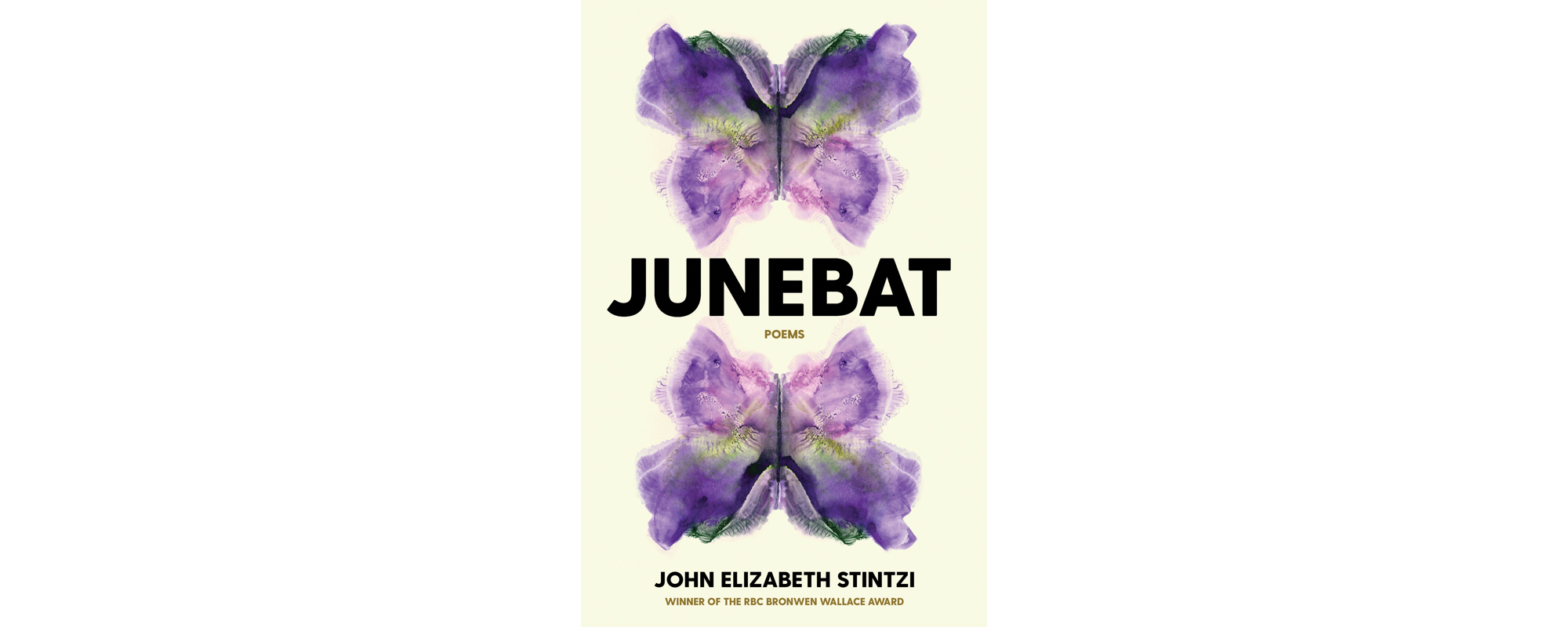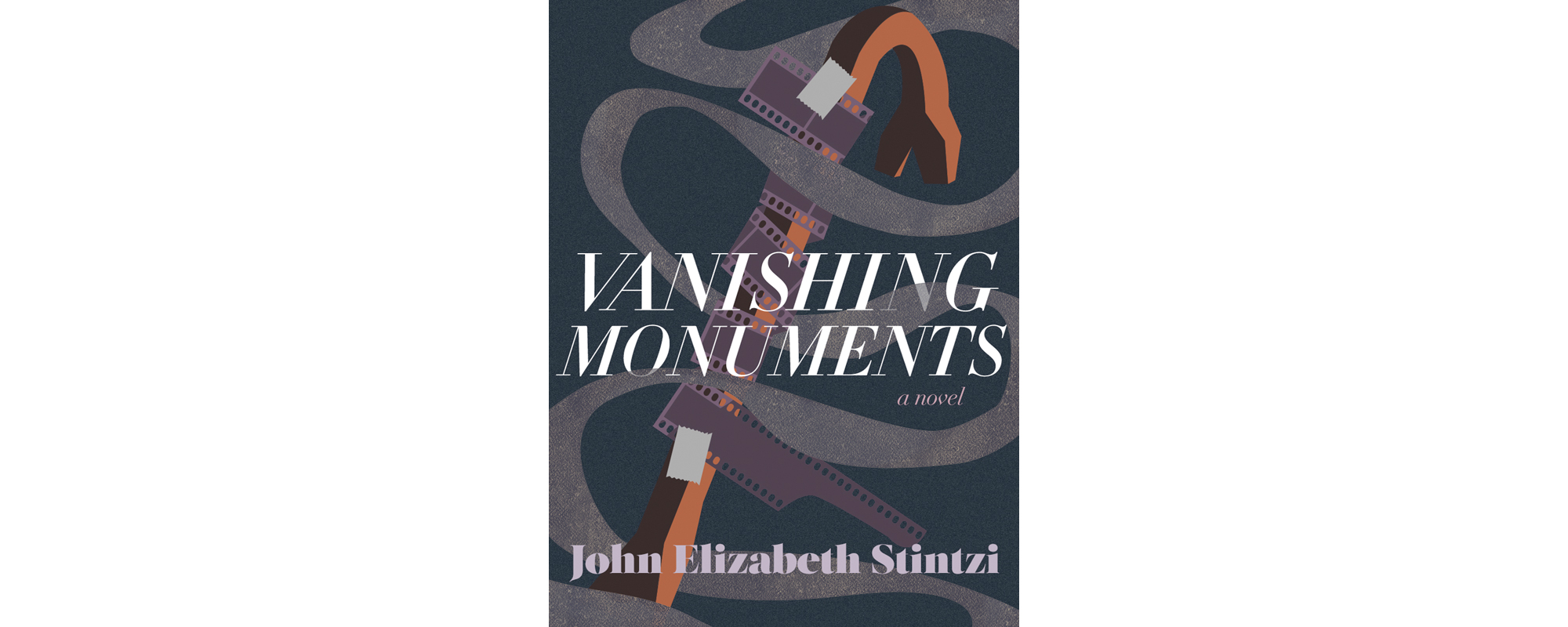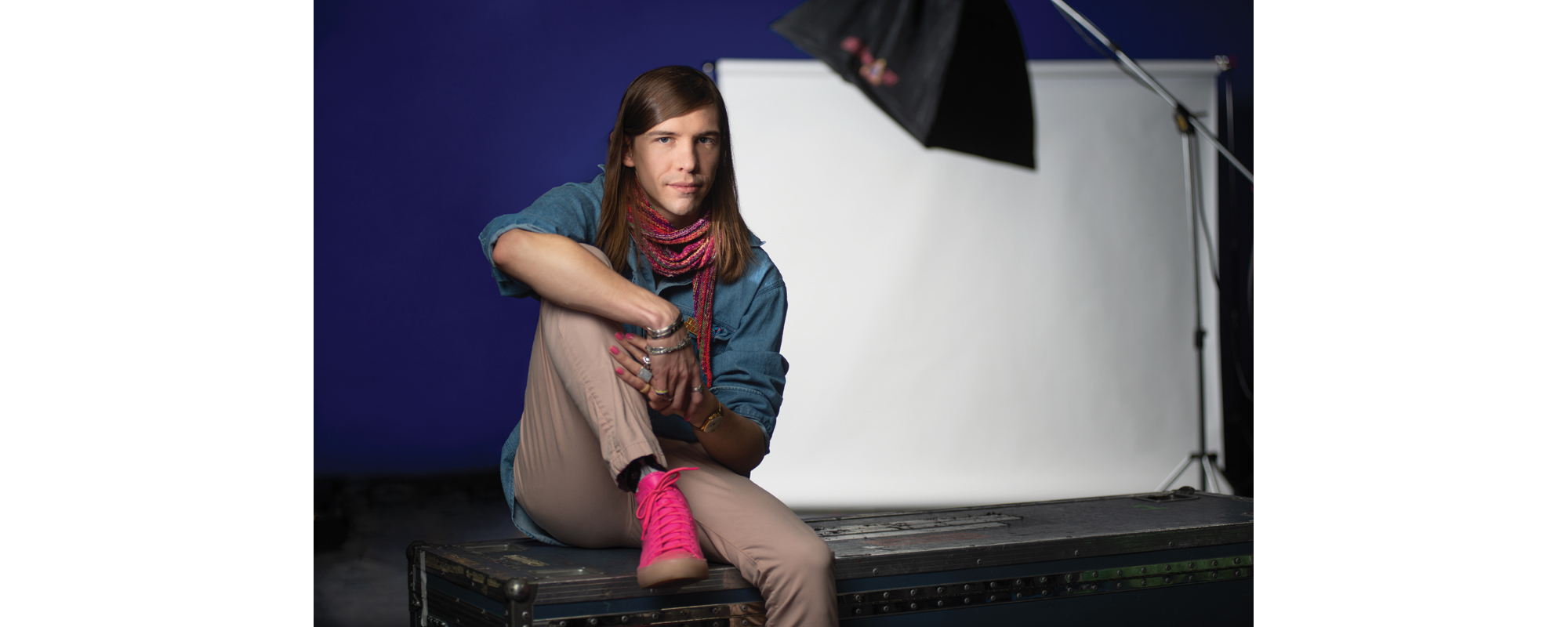Most days, John Elizabeth Stintzi tries to forget that they are just weeks away from being a published author, not just of one book but two. “It very selectively feels insane,” Stintzi says by phone from Kansas City, where the writer, poet, and visual artist teaches critical and creative writing at the Kansas City Art Institute. “It’s very overwhelming and I can’t think about it too directly.”
Stintzi’s books would be forever linked even if they weren’t being published within days of each other – the novel Vanishing Monuments (Arsenal Pulp Press) appears on April 1, followed by the poetry collection Junebat (House of Anansi Press) on April 7. Stintzi describes the books as being “like siblings,” both written during a crucial period of self-examination in which they came out as non-binary and grappled with the personal ramifications of that.
The writer, now 29, hadn’t fully reckoned with their own gender identity until Alani Baum, the protagonist of Vanishing Monuments, forced them to revisit the issue. Alani is a middle-aged non-binary photographer coming to terms with their past after they return home to their ailing mother, who has dementia, in Winnipeg.
“As I saw similarities between Alani and myself, I realized, Oh shit, I think I’m non-binary,” Stintzi recalls. “We have gone on this journey together of getting through all the stereotypes. To make this person more human, I had to make myself realize how human I was.”
Growing up on a cattle farm in Bergland, Ontario, a four-hour drive southeast of Winnipeg, Stintzi was rarely exposed to the possibilities of queer identity. While studying English literature at the University of Manitoba, they embarked on a journey of self-understanding, coming to identify as genderqueer.
“I didn’t really unpack what that meant or think about it that deeply,” they say, speaking in a casual drawl. “I grew up in a place where I barely knew that gay people existed and were, like, real.”
Vanishing Monuments was Stintzi’s thesis project for their master of fine arts program at Stony Brook Southampton, based in the luxury playground of the Hamptons. As summer of 2016 came around and socialites descended on the shoreline, rents soared, driving Stintzi to decamp to a sweaty Jersey City apartment 100 miles west.
“I thought, I should try the whole New York thing, because that seems like the thing you are supposed to do as a writer,” they say. “There were ambitions that I would somehow meet the person who was going to publish my book. I didn’t end up doing any of that stuff.”
Instead, Stintzi found themselves at a crisis point – unemployed, depressed, and navigating their gender identity. Stintzi channelled that emotional chaos into the poetry included in Junebat.
“I had now figured it out enough that I couldn’t go back into the cave and pretend that the shadows are real anymore,” they recall. “Rather than the thing that is going to destroy me, this is a part of me as well.”
Nearly a third of the poems deal directly with the eponymous figure, a shifting being that is often described yet defies classifications. In “Cataphatic Junebat” and “Apophatic Junebat,” Stintzi adopts theological forms that historically attempted to describe the divine by what it is or is not. In “Cataphatic Junebat,” they write, “A Junebat is an analogy / a ghost / an apology / a gender / a joke / simple / a metaphor / a fault line / synonymous / complicated / a sexuality / a solitude / relative / anonymous / a lack of gender / a question / too much gender / natural / a shape.” “Apophatic Junebat” is the same poem reframed by adding the word “not”: “A Junebat is not an analogy / a ghost / an apology …”
Stintzi had already been in talks with House of Anansi editor Michelle MacAleese about fiction projects when they won the 2019 RBC Bronwen Wallace Award for Emerging Writers for “Selections from Junebat.” Emboldened by the prize, they submitted a full manuscript of poetry to Anansi’s poetry editor Kevin Connolly, who Stintzi says accepted the project within a day.
 “It’s the first work of its kind, to my knowledge,” Connolly says in an email. “To render in a book-length work of poetry the circumstances and struggle that comes with a crisis of gender anxiety, and to do so from the eye of the storm.”
“It’s the first work of its kind, to my knowledge,” Connolly says in an email. “To render in a book-length work of poetry the circumstances and struggle that comes with a crisis of gender anxiety, and to do so from the eye of the storm.”
At the same time, Stintzi had sent Vanishing Monuments to Arsenal Pulp Press. Publisher Brian Lam emailed Stintzi after their Bronwen Wallace win to congratulate them and ask to read their manuscript. An algorhythmic misfire almost derailed that connection – Lam’s email went to Stintzi’s spam folder. “It terrifies me that I almost missed it,” they say.
Arsenal’s history of publishing LGBTQ2S+ writing – including recent success with Casey Plett’s Amazon.ca First Novel Award winner Little Fish – made it an ideal home for Vanishing Monuments, which in part explores shifting identity experienced through the narrative perspective of a non-binary character. “The transness is not the focus of the book,” Stintzi says. “I didn’t want to send it somewhere and [have them] be like, ‘Can we just make this all about gender?’ They seemed [more] open to having it be just an aspect of the character than another press that was maybe not as familiar with trans books.”
Vanishing Monuments was originally conceived as a short story but ultimately grew into an epic. The novel’s structure changed more than five times. At one point, it comprised several novellas, then Stintzi expanded the first one, which focused on Alani. Arsenal Pulp editor Shirarose Wilensky gave the manuscript what Stintzi calls a “20,000-word trim.”
The finished product still paints on a vast canvas. Alani reflects on the identities and gender expressions they have tried on, discarded, and absorbed: Sofia, a photographer in Germany; Hedy, named for Alani’s mother, a persona reclaimed as they are cautiously flirting with a life in Winnipeg; and the masc and femme binary poles embodied by Al and Annie.
Alani looks back on the lives they’ve lived while exploring their childhood home – the “memory palace” as Alani calls it, a reference to Cicero’s mnemonic device of mapping a speech onto a familiar building so that portions of the text are recalled by visualizing walking through the rooms. The dreamy, high-concept conceit reflects Stintzi’s abiding love of the unconventional.
As does the book’s cover, which they designed themselves. The illustration references a scene in which Alani wraps a crowbar, which as a teenager they had used to pry open their bedroom window, with a strip of film negatives featuring them dressed as a “monument against fascism” in Germany.
 “I think it’s one of the more strikingly weird things that happens in the book,” Stintzi says, adding dryly, “I don’t think there is another book out there that has a pry bar with negatives wrapped around it. I hope.”
“I think it’s one of the more strikingly weird things that happens in the book,” Stintzi says, adding dryly, “I don’t think there is another book out there that has a pry bar with negatives wrapped around it. I hope.”
Stintzi has grown to appreciate the strange and inscrutable. When they first studied Wallace Stevens in grad school, Stintzi was not a fan. “I hated ‘Thirteen Ways of Looking at a Blackbird’ the first time I read it,” they say. “As I’ve gotten older and thought about it more, it’s more like we’re never taught that it’s okay to not know what the hell is going on.”
Junebat features four poems that reference Stevens directly, including “Thirteen Ways of Looking at a Junebat”: “If you’d like to see me as a Junebat / call me mister or sir and you will / see me, crumpled paper bird, / in the flash of the rubble. / In my polite tolerance of you.”
Though they were directly inspired by a poem published 66 years ago, poetry feels like a medium for the moment for Stintzi. The form has famously discovered a new audience online, who read poems interspersed among breaking political news, birthday greetings, and baby Yoda memes. “You go on an online mag and read some poems,” Stintzi says. “You go on there and want to read a story, you have to stare at a screen for 20 minutes. [Poetry] fits the internet better than other forms do in a weird way.”
Junebat may be Stintzi’s first full-length collection, but they predict it will also be their most direct treatment of gender. “I am interested in a great many things and gender and transness will probably be ancillary to a lot of the stuff that I do in the future,” they say. Stintzi is currently experimenting with non-fiction. “I’m having a few little pieces come out, but I don’t know that I am going to call myself a non-fiction writer,” they say.
“Who the hell knows? I might write an even more trans book next!” Stintzi speculates, raising their voice melodramatically. “Hopefully we’ll move past that. Because I don’t want to answer a bunch of questions about gender for the rest of my life.”
Photography by Thomas Fricke

 Contact us via email
Contact us via email

